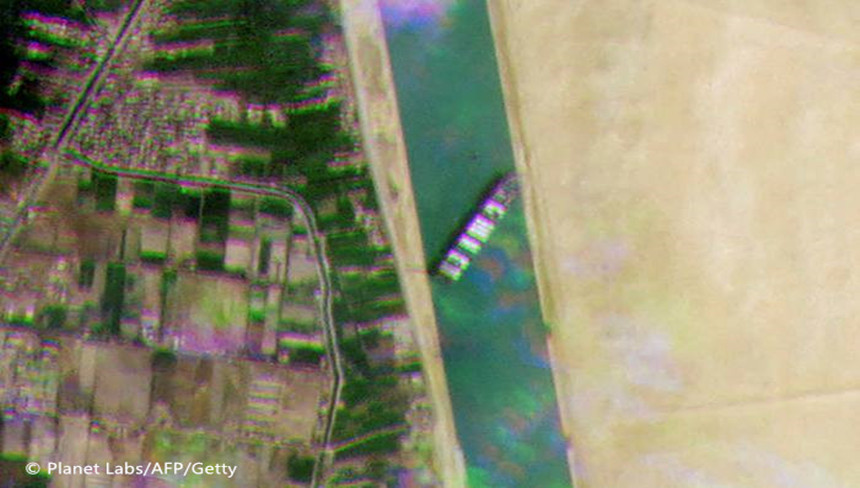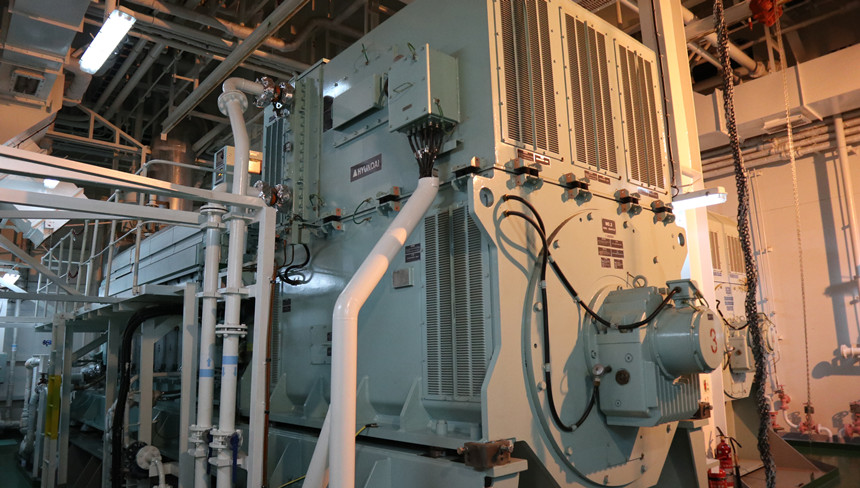LP 11/2021 Beware of Blackout Condition on Ship
Global shipping has been concerned about the massive container ship MV Ever Given which wedged across Suez Canal and blocked movement of other vessels in either direction. The owners could be facing insurance claims, loss of use of the vessel, salvage charges and subsequent costs of repairs. Allegedly, a blackout has occurred before Ever Given ran aground, which prompted us to go through some previous cases where blackout has brought owners great losses and hefty claims, and then offer some safety advice from the perspective of loss prevention.
I. Reasons of blackout
1. Overload in the generator – occurs when multiple equipment plugged in at the same time and the total running watts exceed the limit.
2. Malfunction of prime mover fuel system – power loss resulted from inadequate fuel pressure when the injector needle-valve coupling, or the high-pressure oil pump plunger coupling is jammed or worn. Also, fuel oil poor quality or contamination may cause blockage or air in the fuel system, and further loss of fuel for the machinery.
3. Malfunction of prime mover lubricating oil system or water-cooling system – the generator will stop in the case of low lube oil pressures or high temperature cooling.
4. Malfunction of prime mover speed governor – the engine speed cannot be adjusted in proportion to the generator load and a blackout occurs when there’s a rapid load increase.
5. Failures in electrical panel – if a single insulation fault on one line of the power system is not resolved in time, a second fault on another line in the insulated system will be equivalent to a short-circuit fault and cause the load switch or the main switchboard to trip.

II. Blackout cases
1. Chinese-flagged vessel A suffered a blackout when she was preparing to drop anchor with VTS approval north of the No.3 anchorage in the Yangtze River estuary on 3 June 2020. The ship was then moving at a speed of 5 knots and eventually collided with a nearby vessel under the impact of water flow, despite earlier report to local authorities.
2. Panama-flagged vessel B suffered a blackout when approaching Buoy 47 in the Yangtze River estuary on 7 June 2019. With pilot on board, she emergency anchored off the No.47 fairway and two tugboats were sent to escort her. The ship had to abandon anchor and a large amount of money for tugboats and salvage was incurred.
3. Marshall Island-flagged ship C arrived at Ningde on 18 May 2019 and a blackout occurred when the ship was proceeding north of Baipao Island. She drifted to the aquaculture farm left of the fairway and got out later with the aid of tugboats. The incident has caused one man injured, one fishing vessel sunk and a large aquaculture area damaged. The owner had to deal with claims from farmers and expenses for tugboats incurred from the salvage.
III. Consequences on ships en route
It is not difficult to conclude from these cases that a ship will be completely out of control in case of a blackout and those en route are more likely to suffer severe consequences such as collision, allision, grounding, fire, explosion, spillage and even sinking.
1. Unlike other collision and contact incidents, the crew on a ship out of control can hardly take any measures to mitigate the loss, and therefore chances of serious damage are high.
2. If the ship is in a channel with limited depth of water when the blackout happens, a grounding incident is highly possible, and the situation can be tricky – MV Ever Given being an extreme case if a blackout did occur on ship.
3. If the ship is in nearshore waters or fairways when the blackout happens, it is inevitable that expenses for tugboats would incur and the cost of the salvage operation could be high.
4. If the crew decide to drop anchor in emergency when the ship is out of control, it is very likely that the anchor gear would be damaged or the anchor would be lost, further incurring the cost of compulsory removal of wreck.

IV. Actions to be taken
· Preventive actions
1. Marine engineers should ensure correct maintenance of all equipment including main switchboard, emergency switchboard, power supply control unit and emergency power supply, and have a good record kept.
2. Have a stand-by generator for alternate use and check the level, pressure and temperature of lube oil, fuel supply, the pressure and temperature of cooling water when the main generator is running so that problems can be fixed in time.
3. When the generator and the prime mover is not working: check and adjust valve clearance, check and replace oil sprayers following instructions, check crankcase to clean lube oil filter and fuel oil filter or change the filter element, change air filters for turbocharger and generator, and blow the dust off the generator with dry air.
4. When the ship is in heavy traffic or restricted navigational areas, masters should be familiar with the hydrological and meteorological information and keep the watchkeeping engineer informed.
5. When maneuvering in confined waters or in/out of port, run two generators in parallel to ensure sufficient power availability. Avoid switchboard operations, or simultaneous use of multiple high-power equipment (ballast pump, cargo hoist, ship crane, etc.). Make sure no operation is carried out on fuel systems or cooling water systems and closely monitor the operating parameters of the main generator. Start the stand-by generator once there is any problem.
6. Crew members should be familiar with the procedures to start the emergency generator. Ensure that manual starting procedure is tested weekly, automatic starting procedure and operation of the emergency generator on load is tested monthly. Keep records of the tests and have it stand by on automatic starting mode in daily situation.
7. Ensure regular examination of the emergency battery, which is maintenance free on most ships. Still, routinary measurement and recording of the voltage and current is necessary. The engineer should regularly check the positive and negative terminals of the battery, add grease to prevent oxidation or short-circuit, and fasten the battery to avoid potential damage. Manually discharge the battery once a month to ensure its good performance. Switch to automatic charging and discharging model in daily situation, observe and record the insulation of the panel and the appearance of the battery, and immediately replace the battery if there is any problem.
· Actions in case of blackout
1. Exhibit immediately the light and shape of the ship being out of control and by all means inform surrounding ships of the situation (e.g., broadcasting a navigational warning). The master should in the meantime report to local authorities.
2. The crew members should get ready for dropping anchor, preferably both anchors, to immobilize the ship, but not in anchorage prohibited areas.
3. The master should maneuver the ship in her remaining speed to mitigate risks of collision or grounding.
4. The engine room should take control of the main engine telegraph and the lever needs to be put on Stop.
5. Get power back as soon as possible by running the standby generator.
6. The emergency generator should be automatically started in the event that the standby generator cannot be started.
7. Crew members may need to manually start the emergency generator to provide electrical supply to the emergency switchboard in case the generator did not automatically start. Ensure power supply to emergency lighting, essential engine room equipment, navigational aids and steering gear motor.
8. Upon confirming that the main generator is restored and all essential auxiliaries are automatically restarted, control of the main engine telegraph should be turned to the bridge. Power supply to the steering gear, navigational aids and lighting equipment should then be examined.
9. During the entire time the ship is maneuvered in emergency, engineers should closely monitor the condition of the main engine and generator and keep good communication with the bridge.
10. Initiate contingency procedures immediately in the event of any collision or grounding incident and keep relevant parties informed of the situation.
For more information, please contact your manager at the Club.
